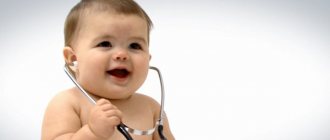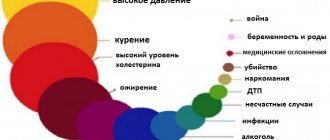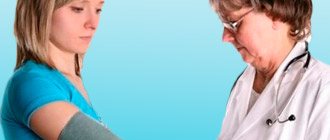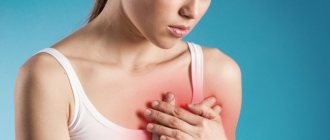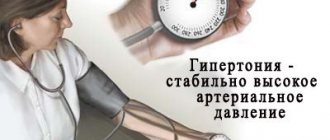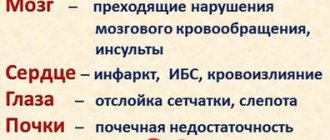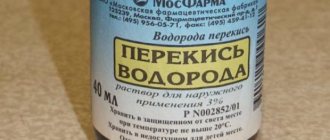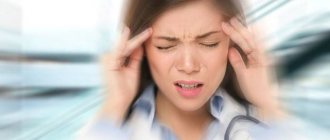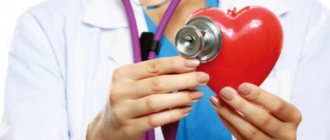During puberty, adolescents face many challenges related to identity formation and socialization. This difficult time is even more darkened if, in addition to misunderstandings, the young person experiences physiological problems. One of the most common pathologies is hypertension in adolescents.
Adolescent stage
Hypertension in adolescents is rarely an independent disease. It develops as a result of a young person’s unhealthy lifestyle or is a symptom of a more serious pathology.
The occurrence of hypertension in youth is facilitated by a hereditary predisposition to high blood pressure. If parents suffered from hypertension, there is a 60% chance that their children will also encounter this problem.
Adolescent hypertension is usually mild. The second stage of hypertension is observed in patients with diabetes mellitus, congenital pathologies of the heart muscle and blood vessels, as well as chronic kidney diseases and head injuries.
Clinical picture of the disease
Parents should take their teenager to see a specialist if they find the following painful symptoms:
- Headaches that occur in the mornings and evenings. They do not go away for a long time;
- The appearance of dizziness when performing physical work;
- The occurrence of attacks of nausea;
- Frequent mood swings.
The symptoms of adolescent disease are similar to those of hypertension, which is found in elderly patients.
If a teenager has hypertension, he or she should avoid overexertion and physical activity.
Causes and who is at risk?
The main reason for the development of hypertension in adolescents is the increased production of hormones that provoke episodic vasoconstriction. During puberty, the heart increases in size, but the diameter of the arteries remains the same. As a result, an additional load is created on the heart, because blood cannot fully pass through the narrowed vessels.
If a patient has persistent hypertension, then its causes may be hidden in diseases of the endocrine system, kidney dysfunction, inflammatory diseases of the heart muscle and pathologies of its development. As soon as doctors treat the underlying disease, the pressure will normalize on its own. Adolescents at risk for developing hypertension include:
- living in countries with hot climates;
- leading a sedentary lifestyle;
- with bad habits;
- constantly located in conditions of dust, loud sounds, vibrations; a high probability of developing hypertension lies in wait, for example, for boys and girls living near airports, railways, and factories;
with an unbalanced regime of activity and rest;- with a deficiency of vitamins and microelements;
- overweight;
- from dysfunctional families, where they constantly experience fear, stress, irritability and other emotions that provoke the release of adrenaline.
In order not to miss the moment when it is possible to prevent pathology and cure hypertension without serious investment of time and money, adolescents must undergo preventive examinations with a doctor once a year.
Treatment of juvenile hypertension
The disease is treated with medications only in the last stages. In the beginning, a change in lifestyle gives a good result for normalizing blood pressure. If the patient is overweight, a diet is prescribed. It is also recommended to correct blood pressure:
- normalize the regime;
- change diet;
- increase physical activity.
Green tea can help normalize blood pressure and remove toxins. Hypertensive patients should completely exclude coffee and strong black tea from their diet. It is advisable to consume more foods containing potassium, magnesium, and B vitamins. Medicines are prescribed if conventional therapy does not produce any positive effect. They should be selected by a doctor. It’s just that a teenager shouldn’t drink them.
How does the disease manifest itself?
Doctors and parents discover symptoms of hypertension in teenagers by chance. Children aged 12-16 years are not used to complaining about being unwell. Considering themselves already adults, they carefully hide their deteriorating health, mistakenly believing that they can handle their problems themselves.
Signs of high blood pressure in teenagers are as follows:
- headaches and fainting often occur;
nosebleeds;- general weakness;
- chest pain;
- increased nervousness and insomnia are noted;
- balance is disturbed and dizziness, which is very noticeable during physical education;
- the patient blinks frequently, as he experiences black flies flashing before his eyes, and his vision decreases.
If blood pressure increases due to excess weight or salt abuse, the teenager's limbs swell in the morning. The face may also become red and short of breath. If you notice such symptoms, you should consult a doctor as soon as possible.
The duration of treatment for adolescent hypertension and its results directly depend on the speed of parents’ actions.
ICP in children
ICP is intracranial pressure. This diagnosis occurs in both the youngest children and children in puberty.
Symptoms of adolescent intracranial pressure are:
- Double vision;
- Drowsiness at any time of the day;
- Bruises under the eyes;
- Headache in the morning and at night;
- Apathy towards those matters that previously aroused interest;
- Vomit;
- Certain manifestations of strabismus;
- Convulsions;
- High fatigue;
- Light flashes before the eyes.
If you consult a doctor in time, the problem can be eliminated. The doctor will approach the treatment process individually. At the same time, the prescriptions do not consist only of a medicinal approach. This applies to the normalization of the daily routine, walks in the fresh air, certain restrictions on physical activity, proper sleep, and an ordered diet. It is useful for a teenager with this diagnosis to go swimming.
Diagnostic methods
In order to make a diagnosis, doctors monitor the patient’s blood pressure readings for several months in a row. The obtained data are compared with the age norm and appropriate conclusions are drawn.
| Age | Norm | Hypertension | ||
| systolic | diastolic | systolic | diastolic | |
| 12 | < 120 mmHg Art. | < 75 mmHg Art. | > 125 mmHg Art. | > 80 mmHg Art. |
| 16 | < 125 mmHg Art. | < 80 mmHg Art. | > 135 mmHg Art. | > 85 mmHg Art. |
| 18 | < 130 mmHg Art. | < 85 mmHg Art. | > 140 mmHg Art. | > 90 mmHg Art. |
To confirm the diagnosis of hypertension, the patient must undergo blood and urine tests for cholesterol, blood sugar levels, as well as hormone breakdown products and uric acid.
To find out the reasons for the development of hypertension in adolescence, an ultrasound examination of all internal organs and an ECG are prescribed. The doctor studies the family’s medical history, because children with hypertension have a hereditary predisposition to this pathology.
What blood pressure is considered high for teenagers?
High blood pressure figures for adults do not apply to children. In children and adolescents, normal blood pressure levels are significantly lower than in adults. This is due to the fact that their vessels are more elastic. Blood pressure is also affected by the width of the lumen of blood vessels and the total area of the capillary network. With age, these indicators change, so the limits of normal blood pressure also change.
The table shows the minimum values of the lower limits and maximum values of the upper limits of normal blood pressure for children and adolescents. The difference between diastolic and systolic pressure when measured should not exceed 40 mmHg. Art.
| Age | Normal blood pressure limits (min. lower/max. upper) |
| 1-2 weeks | 40/96 |
| 2-4 weeks | 40/112 |
| 2 months – 1 year | 50/112 |
| 2-3 years | 60/112 |
| 3-5 years | 60/116 |
| 6-9 years | 60/122 |
| 10-12 years | 70/126 |
| 13 years | 70/130 |
| 14 years | 72/130 |
| 15 years | 72/130 |
| 16 years | 72/130 |
| 17 years | 75/130 |
Hypertension is becoming more common in adolescents
How to treat hypertension in adolescents?
Most antihypertensive medications have age restrictions, so treatment of teenage hypertension is prescribed by a doctor individually.
Therapy begins with lifestyle correction, diet changes and weight loss, if necessary. If there is no improvement, the doctor prescribes drugs from the following groups:
- ACE inhibitor- Perindopril, Enalapril, Fosinopril;
- angiotensin – type 1 receptor blocker – Bloktran, Vasotensin, Cozaar, Lozap;
- calcium antagonists - Verapamil, Nifedipine, Diltiazem;
- beta blockers - Bisoprolol, Nebivalol.
Initially, a course of monotherapy is prescribed; if no improvement is observed, a comprehensive treatment regimen is developed. The advantages of combination therapy lie in the versatility of each group of drugs. In tandem, they will normalize blood pressure and improve the functioning of other organs.
Folk remedies
In adolescence, a hypertensive person already has his own clearly formed tastes; it will not be possible to force him to drink a tasteless decoction or syrup. Traditional medicine recipes must be selected so that the patient uses them unconditionally:
- Beekeeping products are good for lowering blood pressure. They taste good and appeal to most children and teenagers.
- 0.5 liters of honey is mixed with 100 g of cranberries or lingonberries, consumed three times a day.
- Sunflower seeds are also loved by everyone, but few people know that they contain nicotinic acid, which helps dilate blood vessels and normalizes blood circulation. It is important to consume the seeds raw, that is, do not fry them in oil.
- You can achieve a decrease in blood pressure using natural juices of pomegranate, carrots and beets. You can buy ready-made drinks or squeeze the juice yourself. To make a teenager feel better, three glasses of juice a day is enough.
Treatment with folk remedies can be used as the main method of therapy only at the early stage of hypertension. If a teenager has congenital or acquired pathologies of the cardiovascular system, kidney failure or chronic diseases that could provoke a regular increase in blood pressure, it will not be possible to do without synthetic drugs. Herbal remedies can be used as a complement to traditional medicine.
Diet
Diet plays a huge role in the development of adolescent hypertension and many other diseases. Regular consumption of cholesterol-containing and salty foods leads to clogging of blood vessels and poor circulation. Young hypertensive patients need to completely give up processed foods and fast food, which they so love to replace a full lunch. Are strictly prohibited
- fatty and fried meat and fish dishes;
- carbonated drinks;
- bakery;
- smoked meats;
- canned food;
- pickles and marinades.
You need to add foods high in magnesium to your daily menu. Such products include seaweed, seafood, cottage cheese, low-fat milk, eggs, nuts, and dark chocolate. Fresh fruits and vegetables, herbs and dried fruits are required.
Treatment of arterial hypertension
Normalization of the daily routine. Morning exercises, walks for at least 2 hours a day, sleep 8-10 hours a day, limiting TV and computer (up to 30-40 minutes a day), dosed physical activity. Sports such as swimming, walking, aerobics, skiing, skating, cycling, and outdoor games are well suited for hypertensive patients. Heavy lifting and wrestling are not recommended.
Diet.
- Limiting table salt.
- Reducing the consumption of animal fats, foods containing a lot of cholesterol (lard, butter, fatty meats, caviar), by increasing the proportion of vegetable fats (vegetable oil).
- Limiting the consumption of sugar, confectionery, and baked goods.
- Periodic implementation of a vegetarian diet. Fasting days (apple, watermelon, cucumber).
- Creating a favorable psychological environment in the family, jointly giving up the habit of overeating.
Phytotherapy. Sedative (calming) herbs: sage, hawthorn, valerian, wild rosemary, St. John's wort, motherwort. Herbs that have a diuretic effect: lingonberry leaf, bearberry, birch buds, kidney tea.
Herbal collection No. 1: hop cones 2 parts, mint leaves 2 parts, caraway fruits 2 parts, hawthorn flowers 3 parts, plantain leaves 3 parts, valerian roots 2 parts.
Brew 2 tsp. collection with 2 cups of boiling water, leave for 30 minutes, strain. Take 1/3 cup 3 times a day before meals. The course is at least 3 weeks.
Herbal collection No. 2 (to reduce cholesterol):
motherwort grass 2 parts, mountain arnica flowers 1 part. calendula flowers 3 parts, tricolor violet herb 3 parts,
Icelandic moss 1 part.
Brew 1 tsp. collection with 1 glass of boiling water, leave for 6 hours in a thermos, strain. Take 100 ml 2 times a day before meals.
Aromatherapy. To lower blood pressure, use an aroma mixture: 1 drop each of ylang-ylang, geranium, lavender, rose, tangerine oils (aroma lamp). Homeopathic medicines: valeria-nakh-l, pumpan, edas 137.
Physiotherapeutic procedures. Prescribed by a physiotherapist.
- Electrosleep.
- Electrophoresis on the collar area with drugs that have a calming and pressure-reducing effect.
- Water procedures.
Psychotherapy. Individual sessions with a psychologist and group psychotherapeutic trainings.
Drug treatment. Drugs that improve blood circulation in the brain: oxybral, Cavinton, vinpocetine, cinnarizine. At the discretion of the doctor. Nootropic drugs that improve metabolic processes in the brain: nootropil, pantogam, piracetam, phenibut, encephabol, aminalon. At the discretion of the doctor. Diuretics and antihypertensive drugs (lowering blood pressure) are prescribed if other treatments are ineffective.
Prevention of arterial hypertension
- Prevention of bad habits: drinking alcohol, drugs, smoking, overeating.
- Active lifestyle. Hardening. Dosed physical activity (skating, skiing, swimming, running, cycling, race walking, rhythmics, dancing). For boys 5-18 years old, the norm of physical activity is 7-12 hours a week, for girls - 4-9 hours.
- A healthy diet to prevent excess weight. Limiting salt intake.
- Increasing resistance to stress, a favorable psychological climate in the family.
- Mandatory measurement of blood pressure at different periods of life.
General recommendations for hypertensive patients
Bad habits contribute to the development of hypertension, and teenagers who are in a hurry to grow up have more than enough of them. To normalize the functioning of the heart and blood vessels, it is important to adhere to the following recommendations:
- Avoid coffee, alcohol, cigarettes, and energy drinks. They cause nervous excitement and increased blood pressure.
- Increase physical activity. Replace the usual games on the computer with a walk in the park, swimming in the pool, or enroll your teenager in a sports section.
- If you are overweight, you need to take measures to reduce it. If you don't know where to start, seek help from a dietitian.
- Monitor your sleep duration. It should be 8 hours. Overwork and nighttime activity have a negative impact on a teenager’s well-being.
Girls in adolescence often begin to be sexually active and use oral contraceptives without consulting a gynecologist. Arterial hypertension while taking contraceptives is not uncommon. At the beginning of a course of hormonal therapy, experts advise monitoring blood pressure readings. If blood pressure constantly rises, you should choose another method of contraception.
By following simple recommendations, you can not only lower your blood pressure, but also completely avoid problems with the cardiovascular system.
What treatment is prescribed
Clinical guidelines: Treatment of hypertension in children
| Initial appointment with a doctor | Examination, measurement of weight and height, measurement of pressure, calculation of average values of upper and lower blood pressure, comparison of the results with the values of the 90th and 95th percentile, according to the age, height and gender of the child. |
| After diagnosis by a doctor | |
| Normal pressure | Prevention Tips |
| High normal blood pressure | Recommendations for changing lifestyle and nutrition. Repeated appointment with the doctor in a month. |
| Arterial hypertension 1st degree | Repeat diagnostics at 3 visits, assess target organ damage, recommendations taking into account the causes of increased blood pressure, individual treatment and prevention regimens. |
| Hypertension 2 degrees | Full diagnosis, consultation with a specialist on arterial hypertension, weight loss, antihypertensive therapy. |
Treatment of childhood hypertension begins with long-term monitoring by a doctor and lifestyle changes. If such measures do not produce positive results, then doctors prescribe medications that need to be taken in small doses.
The choice of medication remains with the doctor, who is guided by diagnostic data and the general condition of the patient. The age and gender of the child, as well as medical history, are taken into account.
Consequences and complications
When the body is at the stage of formation, frequent increases in pressure that remain unattended can provoke serious complications and significantly reduce a person’s quality of life in the future.
The most common consequences of teenage hypertension are:
- atherosclerosis;
- heart failure;
- chronic cerebrovascular accident;
- renal failure;
- blurred vision;
- complications or development of diabetes;
- metabolic syndrome;
- inhibition of sexual development and erectile dysfunction in boys.
If hypertension occurs against the background of serious chronic diseases and congenital pathologies, inhibition of intellectual development and even disability cannot be ruled out.
Adolescent hypertension is highly treatable and completely curable. It is very important to identify it in a timely manner and carefully follow the doctor’s recommendations. While undergoing treatment, you need to remember that this disease dictates your lifestyle.
You cannot stop taking medications on your own, even if your blood pressure levels have returned to normal and your symptoms have disappeared. Moreover, you should not return to bad habits and unhealthy diets if you want to get rid of problems with your heart and blood vessels once and for all.
